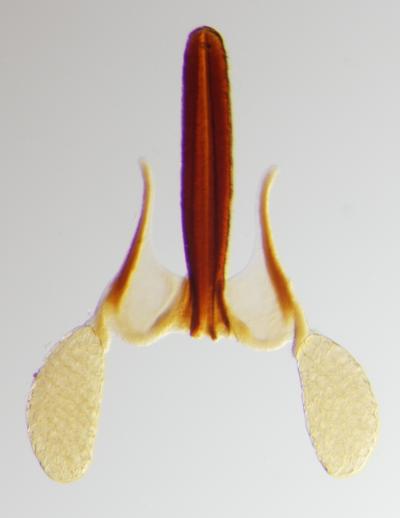

This is an example of the horned pollinaria found in South American milkweed.
Credit: Andrea Cocucci
The team, led by Dr. Andrea Cocucci from the Instituto Multidisciplinario de Biologia Vegetal of Argentina, studied a species of milkweed (Apocynaceae), found in tropical climates.
While plants do not mate like animals, but rather reproduce via pollinators such as insects or birds, competition between individuals to exploit those pollinators can result in confrontation between the plants.
Milkweed reproduce by hooking sacs of pollen grains, known as pollinia, to the bodies of birds and other pollinators, which can be unwittingly dropped into another flower to complete pollination.
It is possible for multiple pollinarium to become entangled together due to the limited number of attachment points on the pollinator, and this Dr. Cocucci's team believe, is the source of confrontation.
The team studied the South America milkweed genus Oxypetalum and found horn-like structures on the pollinia sacs which have no obvious biological use. The paper suggests that these horns are used to prevent the sacs from being hooked together with pollinia from other parent plants.
“Our results suggest that neither self-propulsion nor well-developed sensory perception are required for sexual selection to take place through intrasexual struggles,” said Dr. Cocucci.
“Apparently, only physical contact is enough to influence the mating success of competitors and to promote the evolution of defensive and attack weaponry.”












